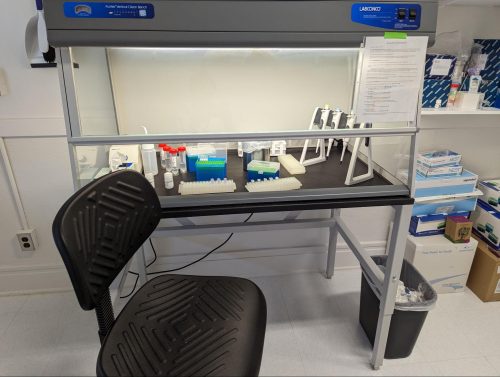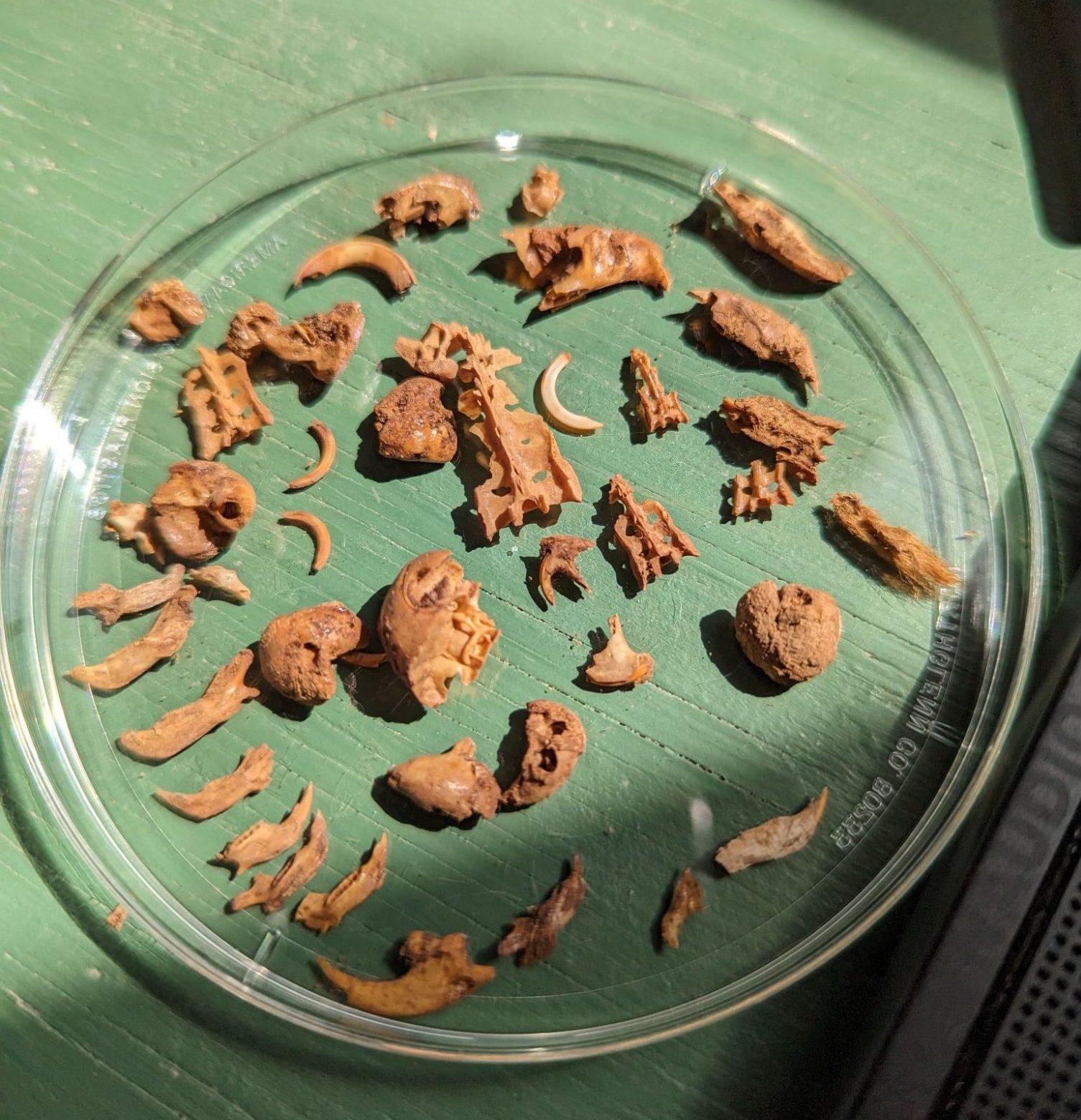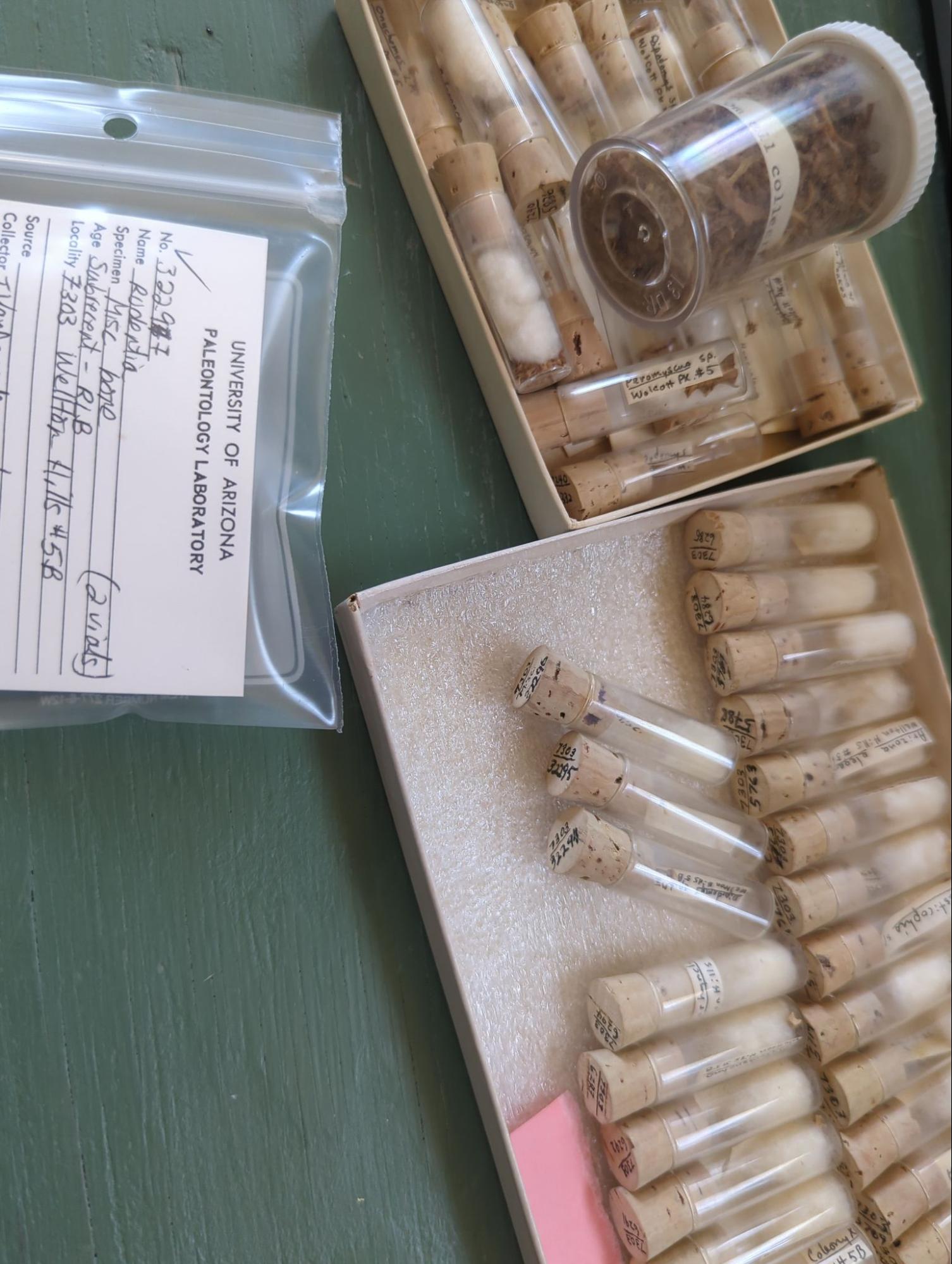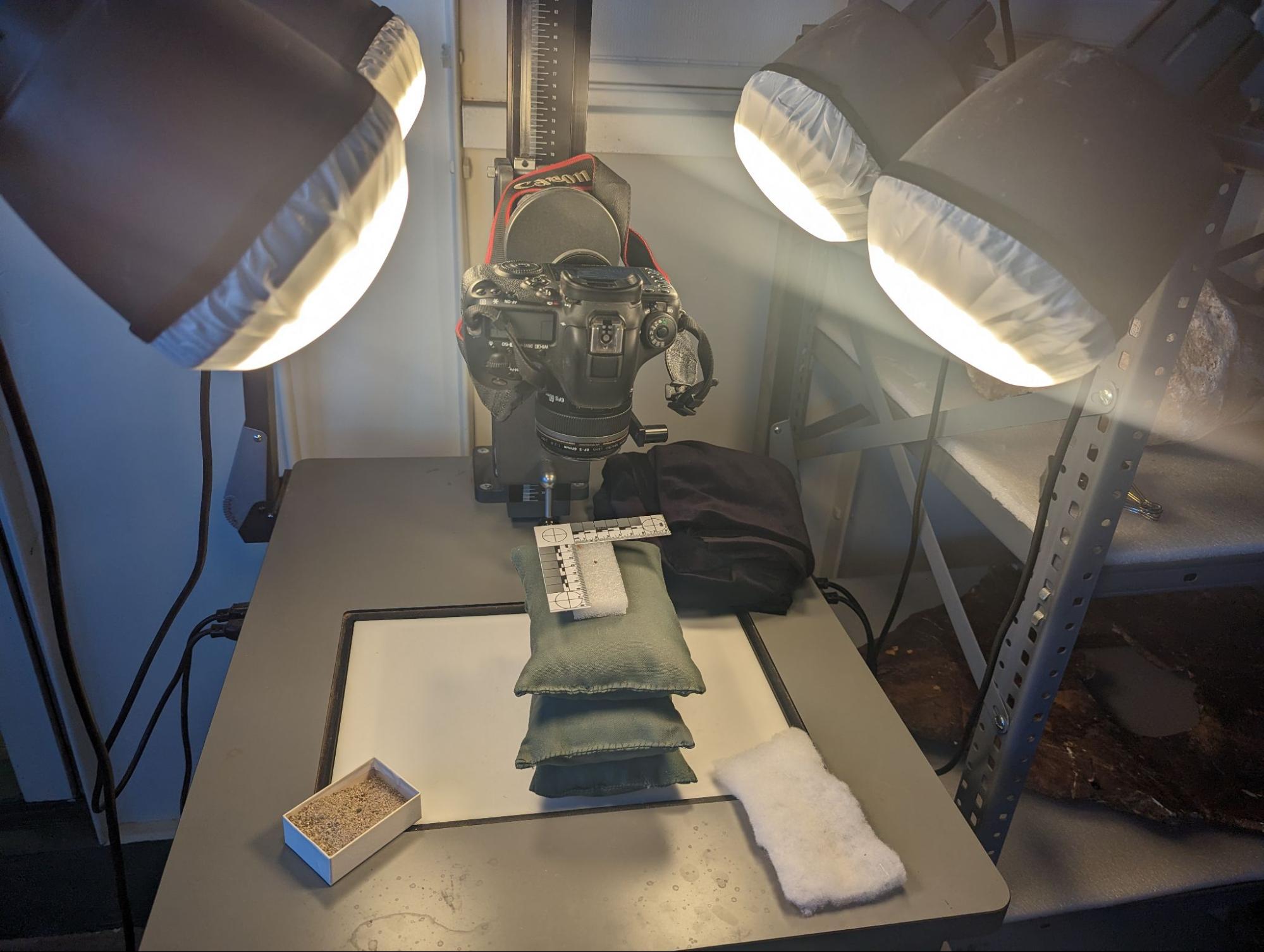The Pleistocene/Holocene transition is marked by a dramatic warming that initiated aridification, the retreat of glaciers, and widespread floral and fauna turnover. A disproportionate amount of attention has focused on megaherbivores, many of which went extinct at that time. However much less is known how abiotic and biotic changes affected small mammal communities. Unfortunately, small mammal fossils often only allow for genus-level identification and while valuable, this resolution limits ability to understand community dynamics through time.
To address this I am using small mammal fossils found within packrat middens. Packrats are a genus of rodent that is widespread across North America. What makes them particularly special is that they collect objects from the surrounding area and bring them to a midden that is used as a latrine for generations. Though it sounds gross, it is incredibly important for preservation. The urine creates an amber-like material that helps to preserve the objects locked inside. This creates a time capsule that preserves the small mammal bones I am looking for, as well as a record of the plant community from when they were alive.
Hundreds of these middens are curated at the Desert Laboratory on Tumamoc Hill in Tucson Arizona, collected over the course of decades by Betancourt, Van Devender, Mead, Cole, McAuliffe, Martin, Spaulding, and many others. This collection provides an unrivaled opportunity to do research that spans both time and space.
In November 2023, the FLMNH travel award funded a trip to the Desert Laboratory. During this trip I extracted ancient DNA from fossil kangaroo rats, pocket mice, and field mice (Dipodomys, Peragnathines, and Peromyscus) from three sites, Walcott Peak, Castle Mountain, and New Water Mountains. These include specimens that ranged in age from 14,550 to 5,020 years old. I also sorted material from Cochise county to find rodent material from an under sampled region of Arizona.
The insights gained from this work will connect to the emerging field of conservation paleobiology, helping to better calibrate baselines responses of rodents to anthropogenic climate and landscape changes and address possible extinction risk into the future.
 This travel was critical to my professional development for two main reasons. In the immediate future, this visit to the Desert Laboratory allowed me to do aDNA extractions from three sites, pivotal to my dissertation. Longer term, this travel helped catalyze relationships with the University of Arizona (Wendy Moore, Gene Hall, Jim Malusa, and others), the Desert Laboratory (Lynne Schepartz), Arizona State University (Nate Upham), and regional scientists (Tom Van Devender, Julio Betancourt, and others). These collaborations will have a lasting impact throughout my career.
This travel was critical to my professional development for two main reasons. In the immediate future, this visit to the Desert Laboratory allowed me to do aDNA extractions from three sites, pivotal to my dissertation. Longer term, this travel helped catalyze relationships with the University of Arizona (Wendy Moore, Gene Hall, Jim Malusa, and others), the Desert Laboratory (Lynne Schepartz), Arizona State University (Nate Upham), and regional scientists (Tom Van Devender, Julio Betancourt, and others). These collaborations will have a lasting impact throughout my career.
Joshua Doby is a graduate student pursuing a Ph.D. through the College of Liberal Arts and Sciences, Department of Biology, advised by Dr. Rob Guralnick, Curator of Biodiversity Informatics here at the Florida Museum.
The 2023 Fall Student Travel Awards are supported by the FLMNH Department of Natural History, including funds from the Louis C. and Jane Gapenski Endowed Fellowship. If you would like to help support this fund for future student awards, please go to:
Louis C. and Jane Gapenski Endowed Fellowship




